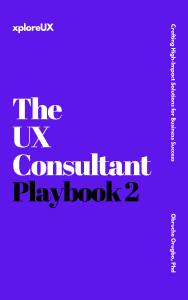
AI-Driven UX Research is revolutionising the way startups approach user experience. In a fast-paced and competitive environment, the ability to adapt quickly, refine strategies, and deliver outstanding user experiences often determines a startup’s success. However, traditional user research methods, while valuable, can be slow, costly, and resource-intensive—challenges that most startups with tight budgets and timelines simply cannot afford to navigate.
This is where AI-driven UX research becomes a game-changer. By leveraging artificial intelligence, startups can gather actionable insights with unprecedented speed and efficiency. These advanced tools automate significant portions of the research process, from data collection to analysis, allowing teams to focus on implementing impactful changes.
AI-driven UX research not only saves time and resources but also provides deeper, unbiased insights into user behavior and preferences. This empowers startups to make informed decisions that resonate with their audience, ensuring their products are both intuitive and user-centered.
In this article, we’ll explore how startups can harness the power of AI-driven UX research to accelerate their growth and innovation. From automated user testing to predictive analytics, discover practical strategies to refine your UX approach, optimise user satisfaction, and stay ahead of the competition. Embrace the transformative potential of AI-driven UX research and unlock the key to delivering exceptional user experiences that fuel long-term success.
AI-driven UX research is the process of using artificial intelligence tools and technologies to gather, analyse, and interpret user data efficiently. Unlike conventional methods that require manual effort, AI-powered solutions automate significant parts of the process, from user testing to data analysis. This efficiency not only saves time but also minimises costs, making it an ideal solution for startups that need to scale quickly.
The core value lies in AI’s ability to process vast amounts of data in moments, identifying patterns and insights that might take human researchers weeks to uncover. By integrating AI-driven UX research into your startup’s workflow, you can enhance your decision-making and create products that resonate deeply with your target audience.
Accelerated Insights
AI-driven UX research provides startups with the ability to gather actionable insights at an unprecedented speed. Traditional methods, such as lengthy surveys or focus groups, often require significant time and coordination. In contrast, AI tools like sentiment analysis, eye-tracking software, and automated usability testing process data almost instantly. This rapid feedback loop allows startups to identify user behavior, preferences, and pain points quickly, enabling faster iterations and product improvements. By leveraging AI-driven UX research, startups can stay ahead of competitors by making data-backed decisions in real-time.
Cost-Effective Research
For startups operating on tight budgets, cost efficiency is critical. Building a dedicated UX team or outsourcing research can be prohibitively expensive. AI-driven UX research platforms offer an affordable alternative by automating key processes such as data aggregation, A/B testing analysis, and feedback collection. These tools not only reduce the need for extensive manpower but also streamline research workflows, allowing startups to allocate resources more effectively. The financial accessibility of AI-driven UX research ensures that even early-stage startups can gain valuable insights without compromising on quality.
Unbiased Data Interpretation
Human biases can inadvertently influence the outcomes of manual UX research. AI-driven UX research eliminates this concern by relying on machine learning algorithms to interpret data. These systems analyse user feedback and behavior impartially, ensuring the insights are purely data-driven. This objectivity is invaluable for startups aiming to understand their users accurately and make decisions that align with actual user needs. By minimising subjective interference, AI-driven UX research provides a reliable foundation for creating user-centered products.
Scalability
As startups grow, their user base expands, and so does the complexity of maintaining an optimal user experience. AI-driven UX research tools are designed to scale effortlessly with these increasing demands. They can process large datasets without compromising speed or accuracy, making it easier for startups to continuously refine their products. Whether it’s analysing feedback from a few hundred users or millions, AI-driven UX research ensures consistent, high-quality insights that support long-term growth and innovation.
By incorporating AI-driven UX research into their processes, startups can gain accelerated, cost-effective, unbiased, and scalable insights. These advantages empower them to create better products, respond swiftly to user needs, and maintain a competitive edge in their industries.
Integrating AI-driven UX research into your startup can significantly enhance your ability to create user-centered products. By leveraging cutting-edge tools and methodologies, startups can gain deeper insights into user behavior, preferences, and pain points, leading to more effective design and development processes.
Automated User Testing
AI-driven platforms such as Maze and UserTesting revolutionise user testing by automating the process. These tools simulate user interactions and gather data on navigation flows, click patterns, and engagement metrics. This approach allows startups to identify usability issues quickly and make targeted improvements. With AI-driven UX research, startups can streamline their testing cycles, saving time and resources while ensuring a seamless user experience.
Natural Language Processing for Feedback
Understanding user sentiment is vital for building products that resonate with your audience. AI-powered tools like MonkeyLearn and Qualtrics use natural language processing (NLP) to analyse qualitative feedback from customer reviews, surveys, and support tickets. These insights provide a clear picture of user concerns, enabling startups to address them effectively. Incorporating AI-driven UX research in this way ensures that feedback is not only collected but also actionable, guiding product refinement.
Heatmaps and Behavioral Analytics
Heatmap tools like Hotjar and Crazy Egg, enhanced with AI capabilities, provide visual data on user interactions. These tools show which sections of your website or app attract the most attention, helping you identify areas for improvement. By integrating AI-driven UX research, startups can optimise design elements and user flows, ensuring that critical features are easily accessible and intuitive.
AI-Powered Prototyping
Modern design tools like Figma and Sketch now include AI integrations that streamline the prototyping process. These features use user data to create prototypes that reflect real user needs and preferences. This capability accelerates the design process and ensures alignment with user expectations. Leveraging AI-driven UX research in prototyping allows startups to iterate quickly and effectively, reducing time to market.
Predictive Analytics for Decision-Making
Predictive analytics tools such as Amplitude and Mixpanel empower startups to forecast user behavior and uncover emerging trends. These AI-driven insights enable proactive decision-making, giving startups a strategic advantage. By integrating AI-driven UX research, businesses can anticipate user needs, optimise product offerings, and stay ahead of competitors.
Incorporating AI-driven UX research into your startup’s workflow ensures data-driven decisions that prioritise user satisfaction. By adopting these tools and strategies, you can create products that not only meet user expectations but also drive long-term growth and success.
Step 1: Define Your Objectives
Before diving into AI tools, clarify your research goals. Are you seeking to improve onboarding? Optimise your website’s design? Or reduce churn? Clear objectives will guide your choice of tools and methodologies.
Step 2: Select the Right Tools
Not all AI platforms are created equal. Choose tools that align with your goals, budget, and team capabilities. Platforms like Lookback for usability testing or Google Analytics with AI-enhanced features can be excellent starting points.
Step 3: Collect and Analyse Data
Leverage AI to gather data from multiple sources, including user sessions, surveys, and social media interactions. Use this data to identify patterns and actionable insights that inform your UX decisions.
Step 4: Iterate and Test
AI tools make it easy to run iterative tests, allowing you to refine your product based on real-time feedback. Continuous iteration ensures your startup stays aligned with user expectations.
1. Spotify’s Personalised Recommendations
Spotify uses AI algorithms to analyse user listening habits, generating personalised playlists and improving the user experience. Startups can emulate this approach by using AI to tailor experiences based on user preferences.
2. Airbnb’s Smart Search
Airbnb employs machine learning to enhance search results, ensuring users find the most relevant listings. Startups can apply similar AI-driven insights to improve search functionalities on their platforms.
3. Duolingo’s Adaptive Learning Paths
Duolingo leverages AI to create customised learning paths for users. By analysing individual performance and engagement, the app adapts to each user’s needs, keeping them engaged and motivated.
AI-driven UX research is transforming how businesses gather and analyse user insights. However, despite its potential to streamline processes and uncover patterns, it is not without its challenges. Companies adopting AI-driven UX research must address specific hurdles to maximise its effectiveness while avoiding common pitfalls.
One of the most pressing challenges is data privacy concerns. AI-driven UX research relies heavily on user data to generate insights, which raises questions about compliance with regulations like GDPR and CCPA. Startups and enterprises must ensure that their data collection and analysis practices adhere to these regulations. Failing to do so can lead to legal repercussions and a loss of user trust. Companies must implement robust data anonymisation techniques and secure data storage protocols to mitigate these risks while still benefiting from AI’s analytical capabilities.
Another significant issue is the risk of over-reliance on automation. AI-driven UX research excels at processing large volumes of data and identifying trends, but it cannot replace human judgment. Creative decisions, nuanced interpretations, and context-aware analysis still require human expertise. Over-dependence on AI may result in insights that lack depth or fail to consider subtle user needs. To strike the right balance, organisations should view AI as a complementary tool that enhances human capabilities rather than a standalone solution.
The learning curve associated with integrating AI-driven UX research into existing workflows is another challenge. Teams may need to invest time and resources in training employees to use AI tools effectively. Additionally, the setup process for these tools can be complex, requiring a clear understanding of both the technology and the specific needs of the UX research process. While this initial effort may seem daunting, the long-term benefits of streamlined research and actionable insights often outweigh the upfront investment.
Despite these challenges, AI-driven UX research remains a powerful tool for improving user experiences. By addressing data privacy concerns, maintaining a balance between automation and human input, and overcoming the learning curve, organisations can unlock its full potential. Careful planning and a clear understanding of its limitations are key to ensuring that AI-driven UX research delivers meaningful and reliable results.
AI-driven UX research is poised to transform how startups design and refine user experiences. With tools powered by AI, researchers can gain unparalleled insights into user behavior, preferences, and emotions. Generative AI, for instance, allows for rapid prototyping and testing of design concepts, significantly reducing the time it takes to iterate and improve. This enables startups to stay ahead by offering experiences that are not just functional but deeply intuitive and engaging.
Real-time data analysis is another key advantage of AI-driven UX research. By processing vast amounts of user interaction data instantly, AI tools can highlight patterns and trends that would otherwise go unnoticed. This empowers teams to make informed decisions quickly, ensuring that their products remain aligned with user needs.
Emotion recognition technology further enhances AI-driven UX research by capturing subtle emotional cues from users. These insights allow startups to fine-tune their designs to resonate on a deeper level, fostering stronger connections between users and products.
Startups that invest in AI-driven UX research gain a significant edge by automating repetitive tasks and focusing on strategic improvements. As AI continues to advance, the potential for innovation in UX research will only grow, driving startups to create truly exceptional user experiences.
AI-driven UX research is a transformative tool for startups aiming to grow rapidly and create outstanding user experiences. By leveraging advanced technology, startups can automate repetitive tasks, analyse user behavior with unparalleled accuracy, and implement cost-effective strategies that drive results. This approach enables startups to focus their resources on innovation and decision-making, ensuring every move is backed by actionable insights.
Incorporating AI-driven UX research into your workflow not only streamlines operations but also provides a competitive edge. Startups that prioritise this approach can uncover valuable patterns and preferences, allowing them to design products and services that truly resonate with their users. The ability to make data-driven decisions swiftly is a critical advantage in achieving sustainable growth.
Embrace AI-driven UX research as a cornerstone of your strategy. It’s the key to unlocking innovation, enhancing user satisfaction, and propelling your startup toward success. Begin your journey today and experience its transformative impact.








2 comments
I think this is a very good article, packed full of insights. Thanks for sharing, please can I share with my friends??
Thanks for your kind words, feel free to share with your friends.